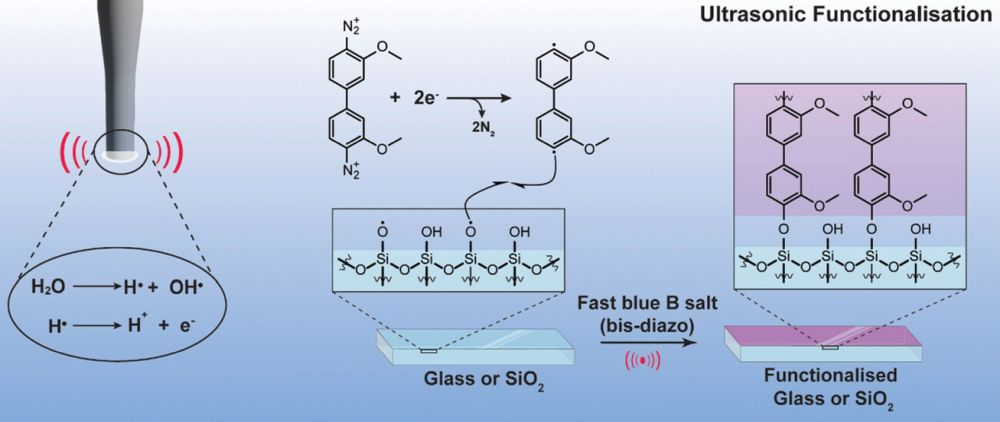|
[flash https://ceramictechweekly.org/wp-content/video/rohrer_greg_grandchalls.flv mode=1 f={image=https://ceramictechweekly.org/wp-content/video/rohrer_greg_grandchalls.jpg}]
|
Greg Rohrer talks about the goals, process and findings of a recent workshop organized to identify the scientific grand challenges and emerging research areas relating to ceramic materials. Credit: ACerS.
What are the big questions that ceramic materials can answer?
In March a group of about 35 ceramic scientists gathered for a workshop funded by the National Science Foundation with the task of identifying the most important scientific challenges facing the ceramics community and the areas of emerging research that the ceramic materials research community should make its priority.
The group also talked about ceramic materials research in an international context and the role of the NSF in supporting ceramic materials research. The consensus seemed to be that scientific research today is collaborative with an international reach, and that the NSF’s Materials World Network is effective at supporting those collaborations.
The workshop represented the full spectrum of ceramics researchers with participants from academia, government and industry. By the end of the workshop, eight categories of scientific challenges emerged. The workshop’s activities and findings will be reported in the Journal of the American Ceramic Society in a paper that will detail the process and include supporting graphs, images, references, etc. Also, the workshop’s organizer, Greg Rohrer, will give a talk on the grand challenges at the ICC4 event in July.
Rohrer, professor and head of the materials science department at Carnegie Mellon University, also is coordinating the follow-up and dissemination of the workshop’s collective findings. At the end of the workshop, he took a few minutes to describe (see video) the workshop, its goals, the process used to tease out the grand challenges and how the group’s conclusions will be disseminated.
Rohrer provided a draft executive summary of the eight challenges that were identified, and they are summarized below. They will be refined further for the paper and presentation, but will probably not stray too far from these.
Understanding rare events
Lifetimes of ceramics in many applications are particularly sensitive to rare (sometimes described as statistical) events. Although statistical techniques, such as those developed by Weibull, satisfy the needs of design engineers, they offer little understanding of the underlying causes of life-limiting phenomena. The challenge is to understand the causes and mechanisms by which rare events lead to failure. Recent advances in methods for the complete three-dimensional characterization of structure and composition, coupled with the expanding capabilities of multiscale simulation techniques that reveal the relationship between microstructure and functionality, will bring the goal within reach during the next 5-10 years. This fundamental understanding has the potential to lead to materials that demonstrate feedback through self-sensing and self-healing functions, leading to materials with extended lifetimes and enhanced sustainability.
Oxide electronics
The challenge is to design and synthesize oxide surfaces, interfaces and nanoscale structures that catalyze a wide spectrum of scientifically inspiring electronic properties, including high mobility, superconductivity, and magnetism, that can be tuned by external electrical, optical, magnetic, mechanical and chemical stimuli. Because of their non-linear properties, oxides have the potential to reveal phenomena not possible in conventional group IV and III-V semiconductor electronics. Crystal growth and design, the control of defects and integration with other materials are all issues associated with this challenge.
Metastable defects in the vicinity of interfaces
The fundamental thermodynamic theory for point defects explicitly ignores the interface structure and proximity to interfaces that act as sources and sinks. However, in nanostructured materials and devices, interfaces are integral parts of the structure and may dominate properties. The challenge is to extend defect chemistry models to account for the metastability of defect distributions in nano-heterogeneous ceramic systems where surfaces and interfaces are closely spaced. Models for defect distributions in these conditions must also account for the composition of the gaseous environment, high pressure and temperature as well as high strain (often present in heterostructures) and high electric fields.
Control of ceramics far from equilibrium
It is now possible to prepare materials that have extremely high surface areas because of their internal porosity, very small particle size, or because they are comprised of quasi one-dimensional (fibers) or two-dimensional (exfoliated layers) components. However, it remains a challenge to predict how the thermodynamic, physical, structural and functional properties of materials prepared far from equilibrium differ from those of the bulk equilibrium phases and how these properties change with composition and grain size. It is also necessary to understanding when such materials have acceptable lifetimes in applications and when they evolve to other states, which often compromise function. There must be greater synergy between theory-computation-modeling and experimental measurements, with the former providing mechanistic insights at the molecular scale and identifying areas where new measurements are needed, and the latter benchmarking the accuracy of the former.
Ceramics: Going beyond boundaries
Interfaces between two phases or between two misoriented grains of the same phase traditionally were thought to have relatively constant properties that vary continuously with temperature. However, a new paradigm for understanding interfaces has emerged that allows the possibility for abrupt transitions in their structures and properties. This new understanding opens up the possibility of producing microstructures with well-controlled grain size distributions and texture. This degree of control makes it possible to imagine nanostructured, heterogeneous composites with new combinations of macroscopic properties, making it possible to move into the “white spaces” of Ashby property diagrams.
Predicting heterogeneous microstructures with unprecedented functionalities
Among all materials classes, ceramics offer the widest breadth of chemistry, bonding and structure, and their combinations with each other and other materials enable the realization of unprecedented functionalities. These functionalities depend on the properties of the constituents and their microstructure at different length scales. Emerging processing, simulation and materials characterization techniques make it possible to understand scientifically complex structure-function relationships. The challenge is to use these new capabilities to develop materials with ultrahigh temperature stability, high ionic conductivity at room temperature and batteries that can charge in minutes and last hours.
Accelerated the development of new ceramic materials
While there exists a wide range of synthetic paths for new ceramics, we are not yet able to make new materials in a sensible and systematic fashion and to explore the physical properties of such materials with an eye to unique behavior and novel applications. The goal is to create totally new types of ceramics rather than to modify existing ones by small changes in composition or processing. This area is especially fruitful for materials containing several anions, e.g., B, N, C, chalcogenides, halides, etc. Addressing this challenge will require guidance from computation on target compositions and synthesis strategies, as well as a merging of the practices of the synthetic chemist and ceramist.
Harnessing order within disorder
The development structure-property relationships for disordered materials are limited by our lack of knowledge of short- to intermediate-range order (non-random structure beyond the first two or three coordination shells). This is a long-standing problem in glasses and glass-forming liquids. New experimental techniques for the observation of intermediate-range order, interpreted using the results of increasingly powerful simulations, will lead to new models for the relationship between intermediate-range order and glass properties in the next five to ten years. This understanding promises to lead to improved functionality, including strength and related benefits with respect to energy consumption and sustainability.
Author
Eileen De Guire
CTT Categories
- Electronics
- Glass
- Material Innovations
- Modeling & Simulation
- Nanomaterials


